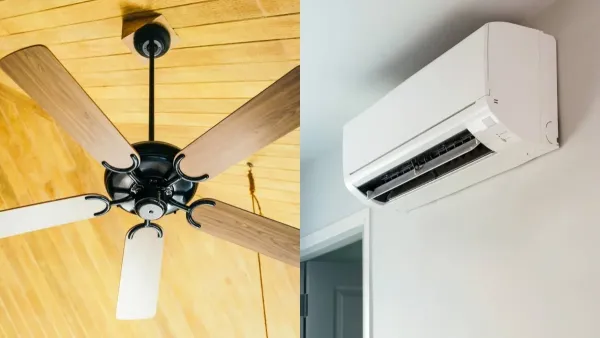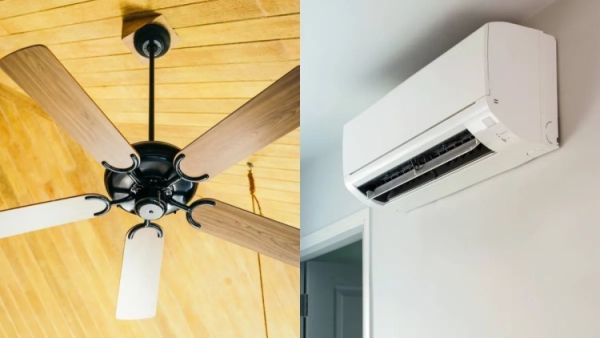
New Delhi: Using air conditioners (AC) will inevitably rise during the sweltering summer months, but this will also cause power bills to soar. In this case, using a fan in addition to air conditioning not only rapidly cools your space but also significantly lowers power use. There are still many individuals who are unaware of this scientific and useful approach.

The AC has to work less to feel cool when the fan distributes the cool air evenly across the space. Your power meter is directly affected by this, operating more slowly than it did before. This lowers both your monthly power expenditure and your electricity use.
According to a 2023 research in The Lancet Planetary Health, integrating interior fans with air conditioners may reduce greenhouse gas emissions and decrease power costs without compromising comfort or health.
How does this approach operate?
Everyone’s initial reaction when they feel overheated is to turn on the air conditioner. A ceiling fan may instantly increase the comfort level of a room and reduce the total power cost when used in conjunction with an air conditioner. Let’s explain how. The average temperature of the human body is around 37 degrees Celsius. When the temperature rises in the summer, the body cools itself via sweating or the evaporation of water in the surroundings. This only works in low-humidity environments, however.
As soon as the humidity increases, sweating ceases to function, leaving us feeling sick and disagreeable. The air cannot or will not absorb any more water than our bodies are exhaling since it is already adequately moist. Here’s where the fans can help. Even while a fan doesn’t cool its surroundings, the air draft it creates may help remove warm air from the skin and help perspiration evaporate, making the body feel more comfortable.
Similarly, using a fan in combination with an air conditioner may assist in rapidly cooling the surrounding air and removing hot air from the room. The sole method is to set the temperature of the air conditioner to 26 degrees Celsius. This will have the same cooling effect as an air conditioner set at 22 degrees Celsius if there is no fan to interfere.
Additionally, even if the AC is set to 26°C and a fan is running in tandem with it, the coolness is maintained. In this configuration, a fan uses just 0.05 units of power per hour, while a typical air conditioner uses around 1.4 units. This consumption may be decreased to around 1 unit per hour by lowering the AC’s load, which can save you a significant amount of money each month.
Effects on maintenance and energy efficiency
Running the fan enhances the AC’s performance in addition to increasing cooling. The air conditioner doesn’t have to operate the compressor for very long when cold air circulates throughout the space. This extends the machine’s lifespan and boosts its efficiency.
The AC compressor does not heat up as rapidly since there is less strain on it, which might help avoid issues like overheating and Freon leaks. For this reason, experts usually advise using a fan with air conditioning if you want to use it for an extended period of time.
Temperature and direction coordination
When using a fan with air conditioning, the fan’s direction is very important. The fan should be turned counterclockwise throughout the summer to send cold air downward and assist maintain a steady temperature. You feel colder as a result, and you may turn up the AC’s temperature without experiencing any pain.
In addition, it’s essential that the room’s windows and ceiling be sealed to prevent the escape of chilly air. Taking this little step may double the impact of your energy-saving initiatives.
-
Apple To Pay $95 Million Over Siri Secretly Recording Users—Here’s How To Claim

-
Week in Review: Instacart CEO heads to OpenAI

-
Celtics Keep Al Horford Starting Over Returning Porzingis

-
Four Practical Pointers To Always Choose The Correct Avocado

-
Virat Kohli’s response to speculation of retiring from Test cricket. Read
